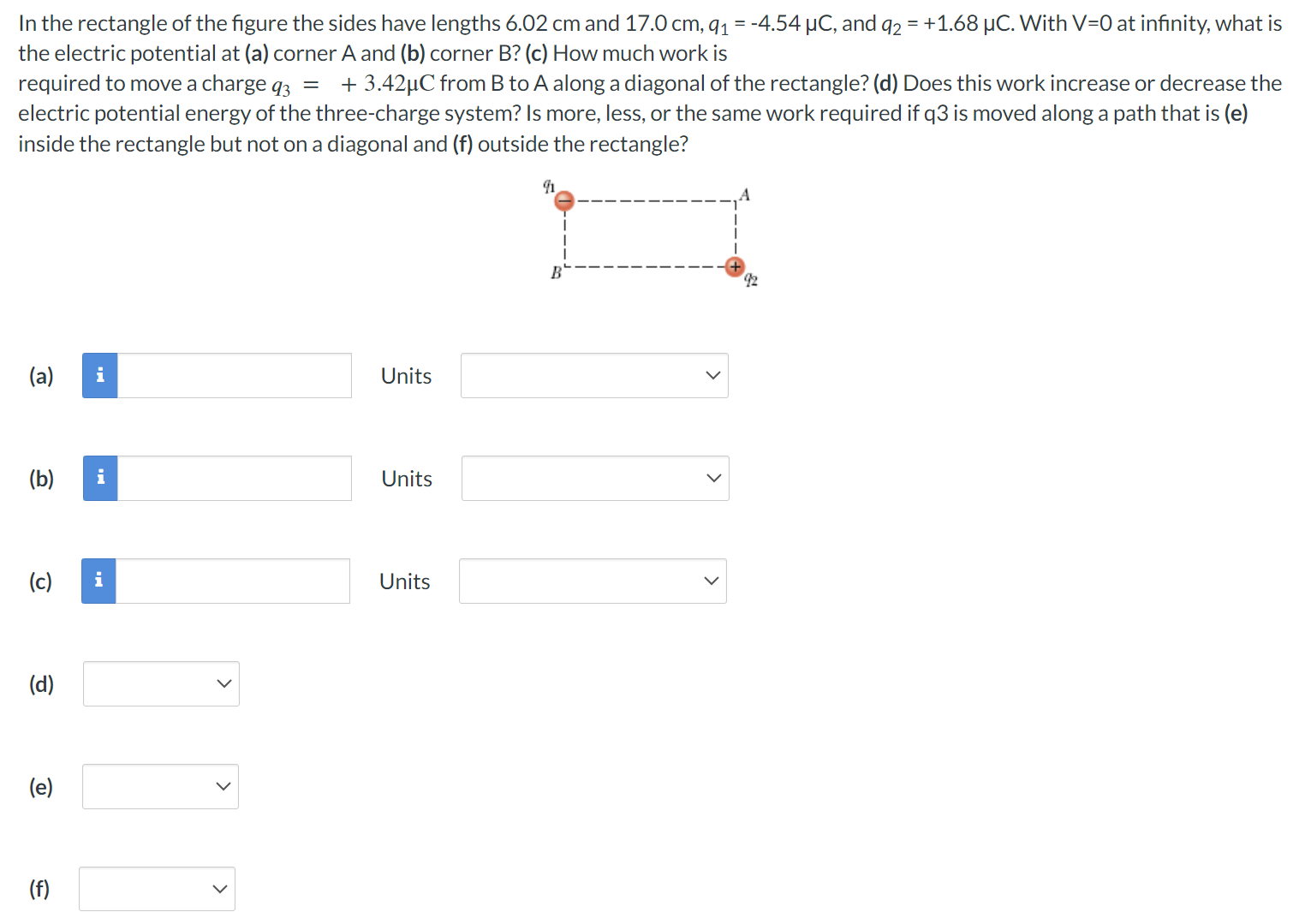In the rectangle of the figure the sides have lengths 6.02 cm and 17.0 cm, q1 = −4.54 μC, and q2 = +1.68 μC. With V = 0 at infinity, what is the electric potential at (a) corner A and (b) corner B? (c) How much work is required to move a charge q3 = +3.42 μC from B to A along a diagonal of the rectangle? (d) Does this work increase or decrease the electric potential energy of the three-charge system? Is more, less, or the same work required if q3 is moved along a path that is (e) inside the rectangle but not on a diagonal and (f) outside the rectangle? (a) (b) Units (c) Units (d) (e) (f)
